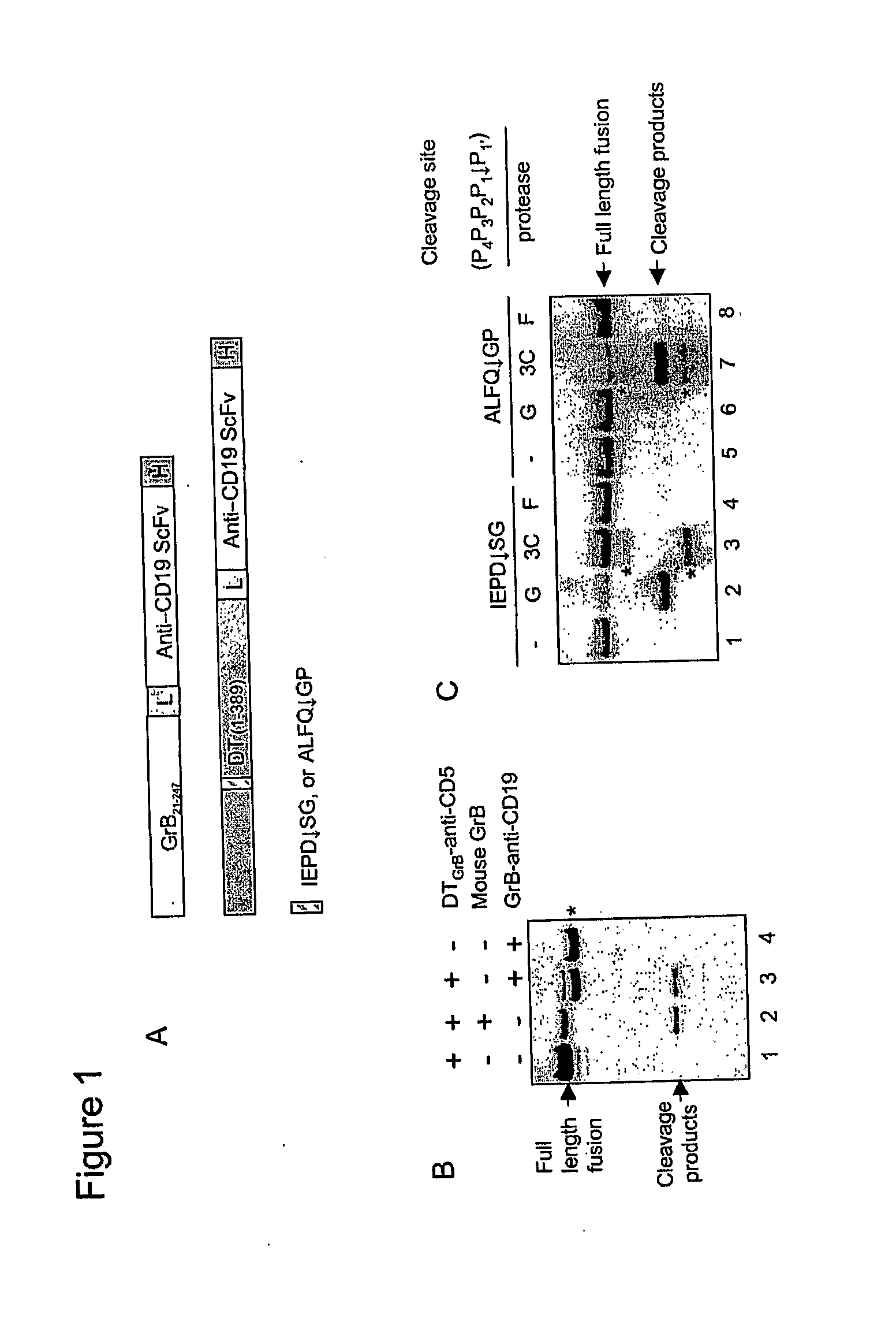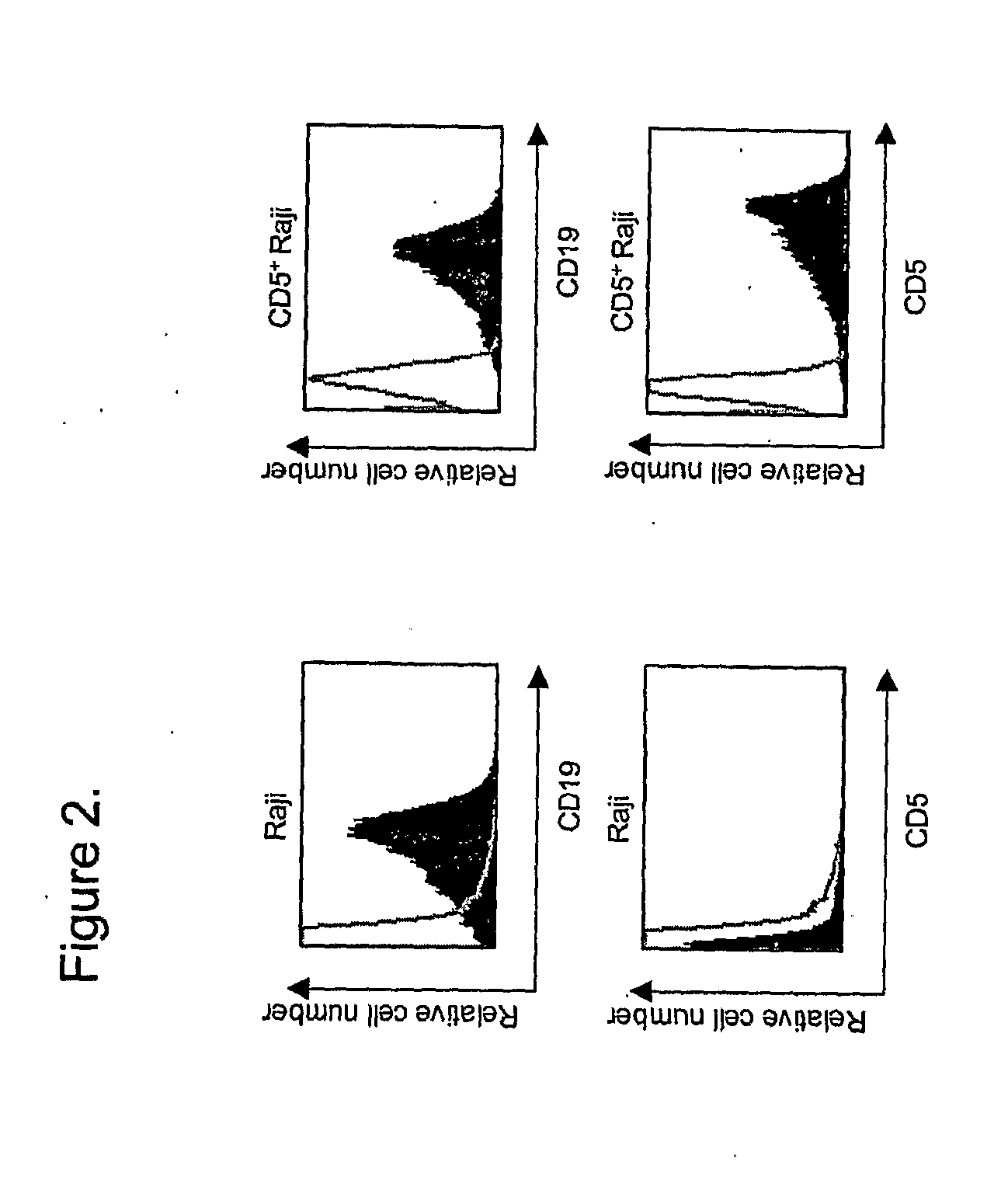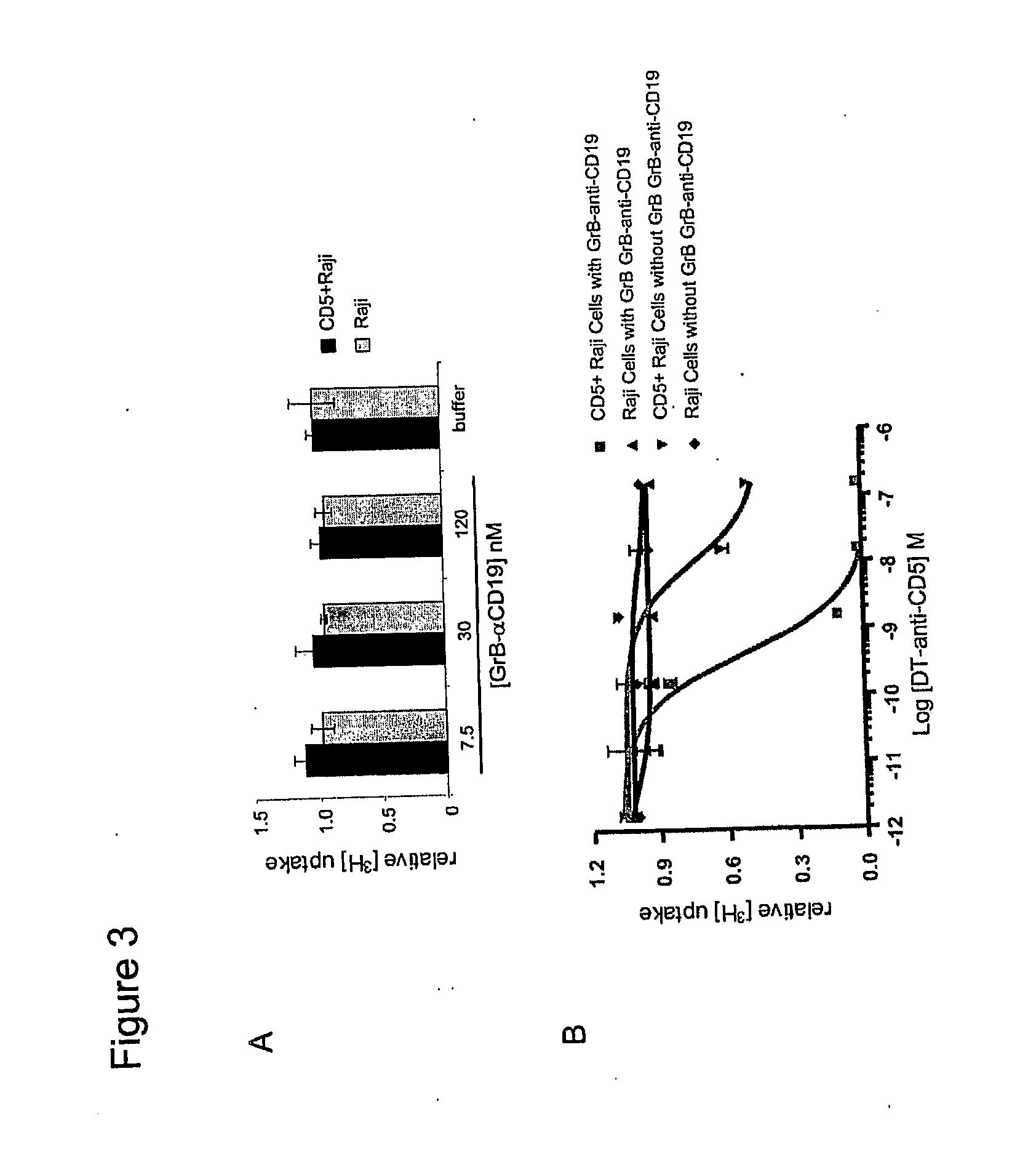Methods, compositions, and kits for the selective activation of protoxins through combinatoral targeting
a technology of combinatoric targeting and protoxins, applied in the direction of hydrolases, peptide/protein ingredients, enzyme stabilisation, etc., can solve the problems of drug resistance, high proliferation rate, severe systemic toxicity, etc., and achieve the effect of promoting the toxic effect of the agen
- Summary
- Abstract
- Description
- Claims
- Application Information
AI Technical Summary
Benefits of technology
Problems solved by technology
Method used
Image
Examples
Embodiment Construction
[0154]The present invention provides methods and compositions for treating various diseases through selective killing of targeted cells using a combinatorial targeting approach. In one aspect, the invention features protoxin fusion proteins containing a cell targeting moiety and, a modifiable activation moiety which is activated by an activation moiety not naturally operably found in, on, or in the vicinity of a target cell. These methods also include the combinatorial use of two or more therapeutic agents, at minimum comprising a protoxin and a protoxin activator, to target and destroy a specific cell population. Each agent contains at least one cell targeting moiety that binds to an independent cell surface target of the targeted cells. The protoxin contains a modifiable activation moiety that may be acted upon by the protoxin activator. The protoxin activator comprises an enzymatic activity that upon acting on the modifiable activation moiety converts, or allows to be converted, ...
PUM
| Property | Measurement | Unit |
|---|---|---|
| Temperature | aaaaa | aaaaa |
| Volume | aaaaa | aaaaa |
| Volume | aaaaa | aaaaa |
Abstract
Description
Claims
Application Information
 Login to View More
Login to View More - R&D
- Intellectual Property
- Life Sciences
- Materials
- Tech Scout
- Unparalleled Data Quality
- Higher Quality Content
- 60% Fewer Hallucinations
Browse by: Latest US Patents, China's latest patents, Technical Efficacy Thesaurus, Application Domain, Technology Topic, Popular Technical Reports.
© 2025 PatSnap. All rights reserved.Legal|Privacy policy|Modern Slavery Act Transparency Statement|Sitemap|About US| Contact US: help@patsnap.com



